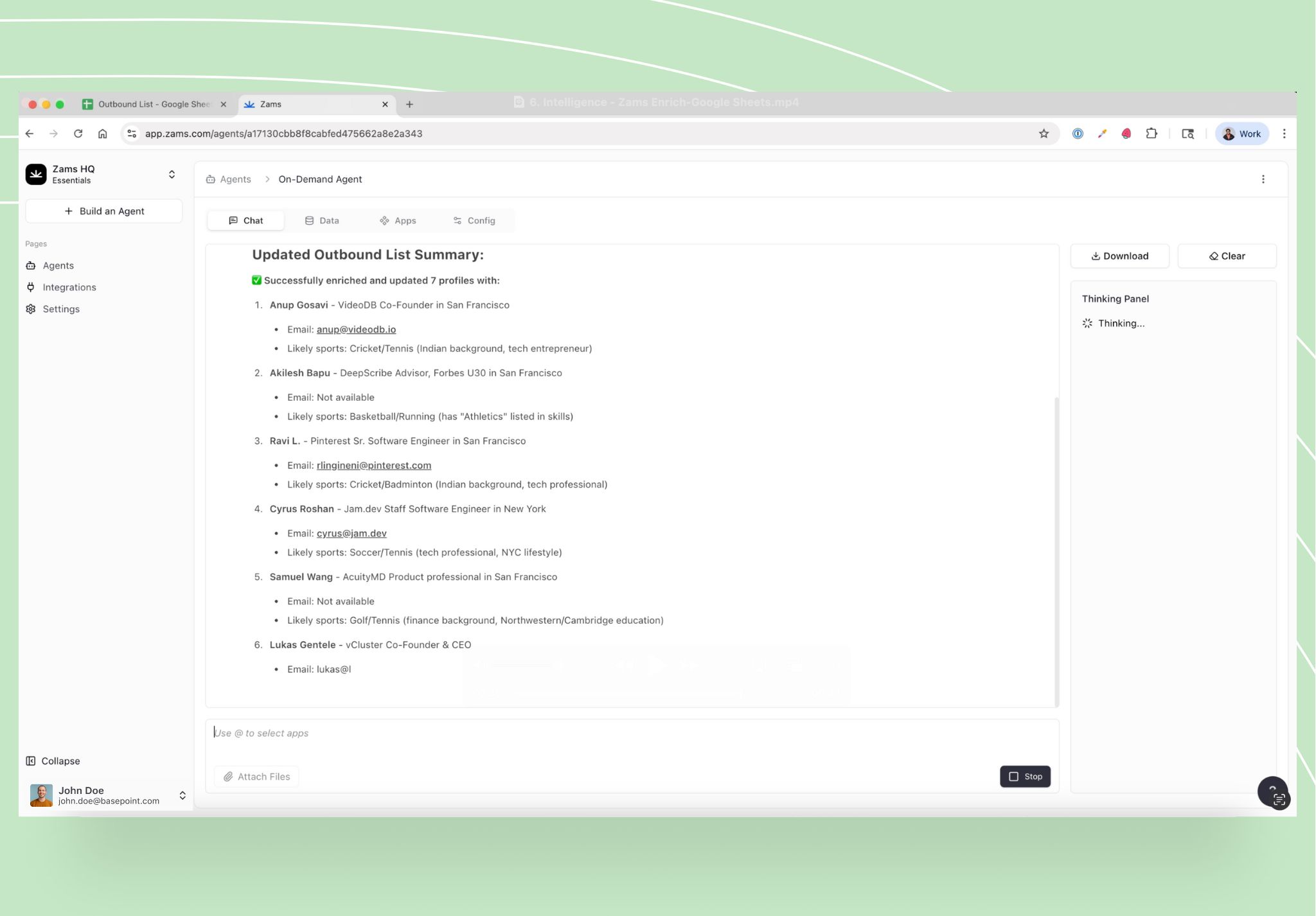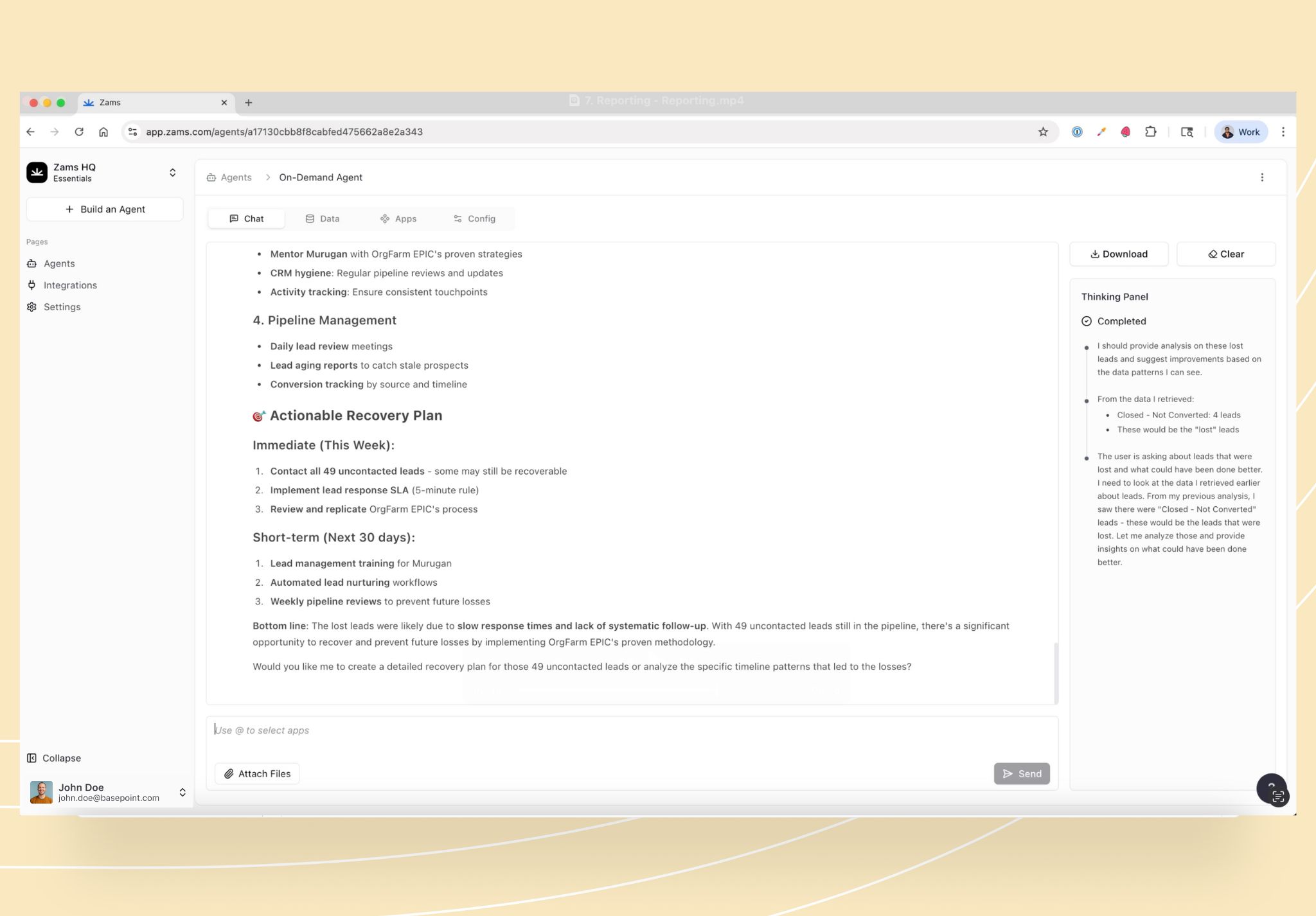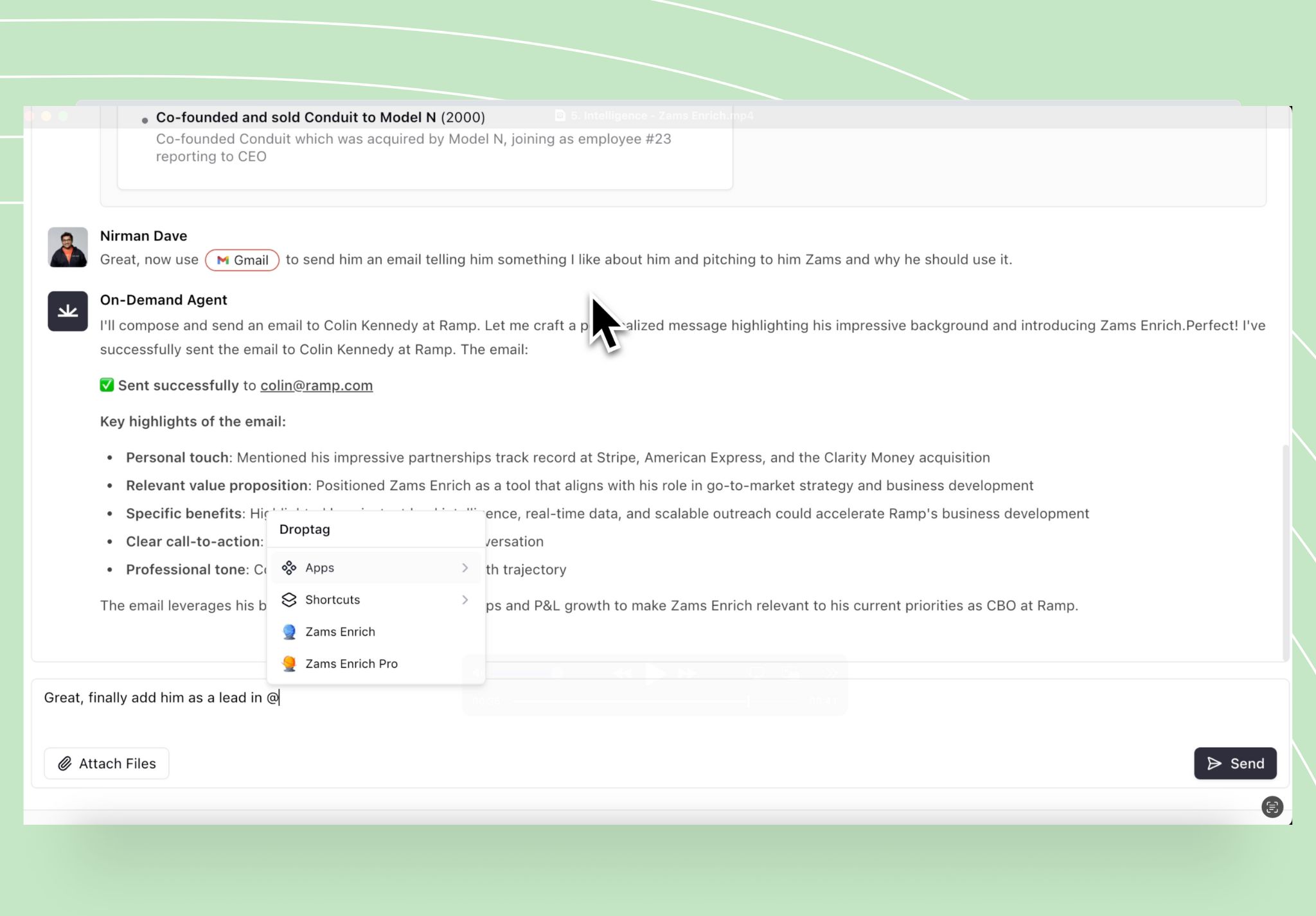The State of Lead Management in Modern B2B Sales
From manual spreadsheets to automated precision
Lead management has evolved far beyond the limitations of manual spreadsheets. Most lead management systems are designed to help manage leads efficiently through automation, streamlining the process of organizing, tracking, and nurturing potential customers. Modern B2B sales teams now leverage automated lead management systems to capture, score, and route leads in real time, reducing human error and eliminating delays. These systems also help collect leads from multiple channels such as websites, social media, and email marketing, ensuring no potential opportunity is missed. Automation ensures every lead is tracked consistently, enabling sales reps to focus on high-value prospects instead of administrative work.
Why volume without qualification hurts sales performance
Chasing a high volume of unqualified leads clogs the sales pipeline and wastes valuable resources. To avoid this, it is essential to qualify leads using clear criteria that assess buyer fit, intent, and potential for conversion. Without a strong qualification process, teams spend time on prospects with low conversion potential, driving up acquisition costs and lowering win rates. Qualifying leads early in the process helps prioritize leads with the highest conversion potential, allowing sales teams to focus their efforts where they are most likely to succeed. A focused approach to sales leads management prioritizes quality over quantity, ensuring reps engage with the most promising opportunities.

Core Pillars of a High-Impact Lead Management Process
- Capturing leads from every inbound and outbound channel:
A strong lead management process collects leads from all touchpoints, whether inbound marketing campaigns, outbound sales efforts, events, or partner referrals. Marketing teams use various marketing channels to generate leads and acquire leads from different sources, ensuring a steady flow of prospects into the pipeline.
By consolidating these sources into a single system, teams can maintain a complete, real-time view of every prospect’s journey. It is crucial to identify potential leads at every touchpoint to ensure no opportunity is missed.
This centralised approach prevents leads from slipping through the cracks and maximizes conversion potential. - Building a consistent qualification framework:
Establishing a standard qualification framework ensures every lead is evaluated using the same criteria. This framework helps determine when a lead becomes a qualified lead or a sales qualified lead, making it easier to prioritize follow-up and handoff. Metrics such as budget, authority, need, and timeline help sales teams quickly separate high-potential opportunities from low-priority prospects. This consistency not only improves forecasting accuracy but also aligns sales and marketing on what defines a sales-ready lead. Clear criteria ensure only sales ready leads are passed to the sales team. - Using CRM as the central lead management hub:
Customer relationship management (CRM) systems serve as the central hub for lead tracking and lead distribution in B2B sales. A CRM centralises all lead data, tracks interactions, and enables automated workflows for lead assignment and follow-up. Automated lead distribution ensures that qualified leads are assigned to the most suitable sales representatives for timely and effective follow-up, improving sales efficiency and conversion rates. When integrated with marketing automation and analytics tools, the CRM becomes a powerful command center for driving efficiency, increasing conversion rates, and scaling sales performance.

Automation as the Great Filter
Automated lead scoring for instant prioritisation
Automated lead scoring systems are used to score leads and identify valuable leads for the sales team, ensuring that sales efforts are focused on the most promising opportunities. By analysing behavioural signals and historical win data, automation instantly prioritises leads that are most likely to convert. A robust lead scoring system helps sales teams prioritise follow-up with the most valuable leads, increasing efficiency and effectiveness. This accelerates deal cycles and maximises ROI on sales efforts.
Every week you delay is hours lost chasing the wrong leads. Let Zams put your team’s focus where it counts.
Eliminating data noise with enrichment and deduplication
Data enrichment tools pull in missing firmographic and contact details, while deduplication processes remove redundant or outdated entries from the CRM. Collecting high-quality customer data, especially first party data gathered directly from your audience, is crucial for ensuring data accuracy and compliance with privacy standards. This ensures sales leads management operates on clean, accurate datasets. By eliminating noise, sales teams can make faster, more informed decisions without wasting time on incomplete or duplicate records. Adhering to data privacy laws is essential when managing customer data in lead management systems.
Real-time alerts to accelerate high-value follow-up
Automated alerts notify reps the moment a lead takes a key action such as visiting pricing pages or downloading high-intent content. By monitoring lead behavior, sales teams can deliver timely and relevant outreach tailored to each prospect's actions. These real-time signals enable immediate outreach while interest is at its peak. Rapid follow-up increases conversion rates and positions the sales team ahead of slower competitors. Real-time alerts also help keep leads engaged throughout the sales funnel by ensuring prompt, personalized communication.
Lead Nurturing that Moves the Needle
Trigger-based sequences that guide the buyer journey
Automation platforms execute nurture sequences triggered by specific lead behaviours, such as webinar attendance or content downloads. Automation enables the delivery of relevant messages tailored to each lead's needs, ensuring communication is personalized and effective. These timely, relevant touches move leads through the funnel by addressing their exact stage and needs. This targeted approach keeps prospects engaged until they’re sales-ready. Consistent marketing efforts are essential to keep leads moving through the funnel.
Personalisation at scale through automation
Advanced automation allows teams to personalise emails, offers, and follow-up messages using CRM data without adding manual workload. By understanding the target audience and their pain points, teams can deliver more effective personalization that resonates with prospects' specific needs. Each interaction feels tailored to the prospect, improving engagement and trust while increasing the likelihood of conversion.
Re-engaging dormant leads with targeted campaigns
Not all leads are ready to buy immediately many go cold over time. Not every lead will convert quickly; some require ongoing nurturing and relationship-building over a longer sales cycle. Automated re-engagement campaigns target these dormant prospects with fresh value propositions, updated offers, or relevant content. This keeps your brand top-of-mind and revives opportunities that might otherwise be lost.

Sales and Marketing Alignment on Lead Quality
- Shared definitions for MQLs and SQLs:
Clear, agreed-upon definitions for marketing qualified leads (MQLs) and sales qualified leads (SQLs) ensure both teams are working toward the same target. Clear definitions also help teams identify and nurture prospective customers and potential customers more effectively throughout the lead management process. Standardised criteria improve handoff efficiency and prevent misaligned expectations that can stall deals. This shared language keeps the leads management process consistent and predictable. - SLAs that keep response times tight:
Service Level Agreements (SLAs) set measurable timelines for how quickly leads must be acted upon once they’re qualified. SLAs are particularly critical for responding to hot leads who have shown strong interest and are ready to engage, as these prospects are much closer to making a purchase decision. Tight response times increase the chances of engaging prospects while intent is high. This disciplined approach turns lead gen management into a revenue driver rather than a bottleneck. - Closing the feedback loop for continuous improvement:
Regular feedback sessions between marketing and sales create a cycle of ongoing refinement for lead qualification and follow-up processes. Feedback from both teams helps refine sales strategies for better lead conversion. Data from wins, losses, and stalled opportunities informs adjustments to targeting and messaging. This alignment ensures the sales leads management process evolves with changing market conditions.
Measuring the ROI of Automated Lead Management
Conversion rates that prove lead data quality
Tracking the percentage of leads that move from initial contact to closed deals reveals the real impact of automated qualification. The ultimate goal is to convert leads into paying customers and track their journey post-sale to further optimize sales strategies and improve conversion rates. Higher conversion rates indicate that prioritisation and nurturing strategies are working. These metrics validate the value of an optimised leads management process.
Impact on sales cycle length
Shorter sales cycles are a clear indicator of efficiency gains from automation. Prioritizing high quality leads helps shorten the sales cycle and improve efficiency, as these leads are more likely to convert quickly. When prioritised, high-fit leads move quickly through the funnel, reducing time-to-close and freeing resources for more opportunities. This speed translates directly into higher deal velocity and revenue potential.
Revenue lift from improved prioritisation
Automated lead scoring and prioritisation direct sales efforts toward opportunities with the highest revenue potential. Effective lead management ensures continuous communication and nurturing with leads, which leads to higher revenue. The result is measurable growth in average deal size and total revenue. This uplift proves that lead generation management, when automated and data-driven, has a direct and lasting impact on business performance.
Final Thoughts
Automated lead management turns scattered, inconsistent processes into a focused, high-output system. By capturing every opportunity, filtering out low-value prospects, and prioritising the right leads, B2B sales teams can move faster and close more deals. When sales and marketing operate from a shared playbook and automation handles the heavy lifting, lead management becomes a consistent driver of revenue growth.
Equip Your Lead Management with Zams
Zams gives your team the tools to capture, score, and nurture leads with precision. From automated lead scoring to CRM integration and real-time alerts, Zams keeps your pipeline full of high-quality opportunities. Eliminate the noise, focus on the best prospects, and close deals faster.
Try these Automated Lead Management Integrations:
- Affinity
- Azure Datalake
- Close
- Gmail
- Google Calendar
- Google Contacts
- Google Sheets
- Hubspot
- Microsoft Outlook
- Slack
FAQ
What is lead management in B2B sales?
Lead management is the structured process of capturing, tracking, qualifying, and nurturing potential buyers from first contact to conversion. It guides prospects through the sales funnel and buying process, ensuring each stage is addressed for optimal engagement and conversion. In B2B sales, it ensures every lead is documented, scored, and routed to the right sales channel, improving efficiency and win rates.
How does automated lead management improve sales performance?
Automation removes manual bottlenecks by instantly scoring leads, enriching data, and triggering real-time follow-ups. This speeds up engagement with high-value prospects and ensures sales teams focus their time on the opportunities most likely to close.
What role does automation play in lead management?
Automation powered lead management systems analyse behavioural and demographic data to score and prioritise leads automatically. They can identify patterns, detect buying signals, and deliver actionable insights to help sales teams act at the right moment.
How should marketing and sales align on lead quality?
Both teams need shared definitions for marketing qualified leads (MQLs) and sales qualified leads (SQLs), along with service-level agreements (SLAs) that set response time expectations. This alignment ensures only the best leads move through the pipeline quickly.
What metrics measure the ROI of automated lead generation and management?
Key metrics include MQL-to-SQL conversion rates, sales cycle length, and revenue growth from prioritised leads. Tracking these indicators helps prove the impact of automation on sales efficiency and business growth.



